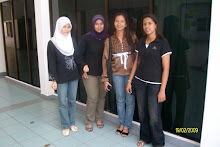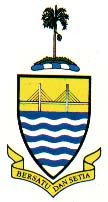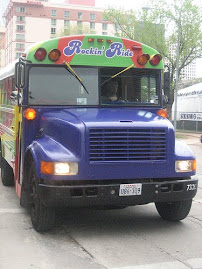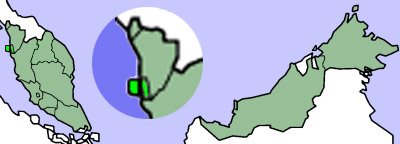Some Suggestion to Improve Public Bus Services in Malaysia
With the recent decrease in the fuel subsidy, many people have complained that they would be willing to use public transportation if it were improved. They are calling loudly and clearly to the government to improve public transportation. We must look at other places and see what they have done to improve their public transport system. However, it must be clearly understood that there is a right way and a wrong way to improve public transportation in Malaysia. Below are the suggestions to improve public transportation in Malaysia.
A Parliamentary Committee for Public Transportation must be created to oversee public transportation in Malaysia.
The existing Cabinet Committee does not have the confidence of the people of Malaysia. The presence of a Parliamentary Committee will improve confidence in public transportation. Planning and decision making will be improved through open planning and discussion. The Committee will help the MPs and the public to understand the proposals from the bus operators and the government, so the best plans are made.
A single National Authority for Public Transportation to create national standards, while Local and Regional Public Transportation Authorities will plan and implement strategies on the local level.
Public transport planning is invariably a local and/or regional service. It would not be possible for the proposed Suruhanjaya Pengangkutan Awam Negara (SPAN) to plan and oversee public transportation properly. Thus, each economic region of the country should have its own Local or Regional Public Transport Authority to own the bus routes and transport corridors and plan the future of public transportation.
Regulated Competition would be enhanced under the system provided.
The Public Transport Authority would own the buses and provide capital funding, while the operators would be required to compete for routes. This combination of regulation and competition would improve service levels and provide better, customer-focused services. Operators that could not meet the expectations of the Local Authority or the passengers would lose the routes to their competitors.
Only a few operators
Competition is hurting public transportation in Malaysia. The only way that we can see real improvements is to reduce competition within the industry and focus on consolidation. The largest bus company, Konsortium Transnasional Berhad, is a good example of this consolidation. It offers express and intercity and urban bus services through its different branches and brands. Konsortium Bas Ekspres on the other hand, shows you what happens when there is consolidation without proper regulation. Konsortium Bas Ekspres has become notorious for bus crashes, underpaid and reckless drivers, and poor maintenance. The government should encourage existing operators to form properly regulated conglomerates. Under the proposed system of regulated competition, the Local Authority can even (with proper justification) invite foreign transport companies to compete for bus routes tendered in their areas.
Proper information
Malaysians are, ironically, being restricted by companies that are supposed to provide them mobility. Bus operators and even government operators like RapidKL, KL Monorail, and KTMB are doing everything in their power to keep passengers using their services-even at the expense of passenger convenience. Bus operators only provide basic route information and only on the bus itself. RapidKL has discouraged the sale of integrated public transport maps. In addition, for RapidKL to provide route information at a bus stop or give updates on the radio, they are forced to pay advertising rates. With little or no comprehensive information available to public transport users, their ability to use the services and maximize their ringgit is severally limited. When the local Public Transport Authorities are created they should be expected to provide information through signs on bus stops, the internet, news-spots on broadcasting and narrowcasting, free paper guides, downloadable route maps, and sms services. This will help information reach the customers.
MORE BUSES
Most people would think that this should be further up in the list but I disagree. We cannot build public transportation without realistic demands and proper data. Without these vital pieces of information, our planning is reduced to "If we build it, they will come". There are enough buses in the Klang Valley (shared among the major and minor bus operators) to meet all of the needs to the DBKL. These buses need to be better organized so they do not only focus on the profitable routes and do not spend most of their time waiting for passengers. Only a local public transport authority which owns the routes and controls the buses would be able to implement a successful system. If we rely on the operators themselves to organize and improve services, nothing will happen.
Build better public transport from the bottom up
Bus lanes are not a popular solution among drivers. But we have to realize that bus lanes and bus rapid transit system are a solution that will work for the Klang Valley and throughout Malaysia. Rather than spending all our funds in the Klang Valley alone, we should be thinking about improving public transportation throughout the country.
Affordable and reasonable fares
There is no logic if any proposal that says that bus fares and public transport fares must be subsidized. Most people would assume that the "lower-income group" comprises the majority of public transport users, and therefore subsidies would be necessary. However, this only perpetuates the image that public transport is for the lower-income group and the poor.
The fact is that low fares have brought us into this situation of low-quality service. Effectively, we get what we pay for. So if we wish to see public transportation improve, we will have to invest more money into our services and that includes higher fares.
At the same time, higher fares do not have to be a burden. Under the system of regulated competition, the local authority would be able to run the fare system and they would be the best choice to implement the subsidy for operators. The local authority can also provide support to the needy in the form of free bus passes or discounted bus passes. They can also encourage fare-saving promotions, fare discounts for using Touch N Go, and even income tax credits for those who purchase monthly and weekly passes.







.jpg)






























